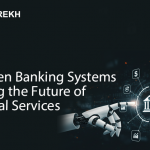
The IT industry is a powerhouse of innovation, but it’s also a significant contributor to global carbon emissions. From massive data centers to power-hungry software, the environmental footprint of technology is growing. According to research, the ICT sector now accounts for 1.7%+ of global GHG emissions, rivaling the aviation industry.
This makes Green Project Management (Green PM) an essential approach for the future. By embedding sustainability into every stage of IT project management, organizations can reduce costs, comply with ESG standards, and align with the Project Management Institute’s (PMI) sustainability vision.
What is Green Project Management?
Green project management is the process of applying proven project management methods while prioritizing environmental sustainability. Unlike traditional approaches that focus solely on scope, cost, and time, Green PM adds environmental and social impact as a success metric.
One of the leading frameworks, GPM P5, assesses projects on:
- People
- Planet
- Prosperity
- Process
- Product
This aligns projects with UN Sustainable Development Goals (SDGs) and ensures IT initiatives deliver lasting value for business and society.
Benefits of Green PM in IT include:
- Lower operational costs through efficiency gains.
- Compliance with ESG regulations.
- Enhanced brand reputation.
- Measurable carbon footprint reduction.
Why Green PM Matters for IT Projects
The urgency is clear:
- Data centers already consume 4.4% of U.S. electricity (2023), projected to hit 12% by 2028.
- E-waste reached 53.6 million metric tons globally in 2019.
- IT energy costs have grown 50% faster than revenue in many sectors.
Green PM addresses these challenges by:
- Reducing energy per compute unit.
- Extending hardware lifecycles.
- Transitioning workloads to renewable-powered infrastructure.
- Embedding sustainability KPIs in project charters.
What is Green Coding?
Green coding is a key pillar of Green PM in IT. It involves writing software that minimizes resource usage and energy consumption.
Core green coding practices:
- Optimizing algorithms to lower computational complexity.
- Reducing unnecessary network requests.
- Using efficient data formats.
- Scheduling heavy workloads during renewable energy peaks.
- Avoiding “feature bloat” that increases processing demand without adding value.
In simple terms, what is green coding?
It’s coding for performance, efficiency, and sustainability, creating software that runs leaner and greener.
Frameworks & Standards for Green PM
To ensure credibility and measurable impact, organizations can adopt:
- GPM P5 Standard – Evaluates sustainability impact across five key dimensions.
- PMI PMBOK7 + ESG – PMI’s integration of environmental, social, and governance principles.
- ISO 14001 & ISO 50001 – Global environmental and energy management standards.
- Green Software Foundation (GSF) – Sets tools like the Software Carbon Intensity (SCI) standard.
- UN SDGs – Links IT projects to global sustainability targets.
Green PM Case Studies in IT
Infosys – Achieved carbon neutrality 30 years ahead of schedule by cutting electricity use per capita by over 50%, adopting renewables, and offsetting emissions.
Tech Mahindra – Reduced Scope 1 emissions by 76% through efficient infrastructure, renewable energy, and reduced travel.
Google Data Centers – Operate at near-theoretical best power usage efficiency (PUE ≈ 1.10) and have matched 100% of electricity with renewables since 2017.
Common Pitfalls to Avoid
- Greenwashing – Making sustainability claims without measurable proof.
- Ignoring Scope 3 Emissions – Overlooking supply chain and lifecycle impact.
- Unintended Consequences – For example, AI models or crypto mining projects that consume huge amounts of energy.
How Different Roles Drive Green PM
- Executives – Set green KPIs and allocate funding.
- Project Managers – Embed eco-goals into project scope and quality metrics.
- Developers – Apply green coding techniques.
- DevOps/IT Ops – Optimize server use and shut down idle environments.
- QA Engineers – Include energy efficiency in test plans.
- Business Analysts – Incorporate sustainability into requirements gathering.
Green PM Implementation Roadmap
- Assess & Baseline – Measure current ICT footprint.
- Define Goals & KPIs – Set measurable sustainability targets.
- Embed in Processes – Integrate eco-checks in all project stages.
- Implement Initiatives – Upgrade infrastructure, refactor code, use renewables.
- Monitor & Report – Track progress with dashboards.
- Iterate & Scale – Apply best practices across the portfolio.
The Role of the Project Management Institute (PMI)
The Project Management Institute is a global leader in promoting sustainability in projects. Through training, certifications, and events, PMI empowers project managers to execute projects in a sustainable manner called Green Project Management. Many project management speakers at PMI events now emphasize that sustainability is not just ethical, but also profitable.
FAQs
Q1: What is Green Project Management?
It’s the integration of environmental sustainability into project management, ensuring projects deliver both business value and positive environmental impact.
Q2: What is green coding?
Green coding refers to writing software in a manner that minimizes energy consumption and reduces carbon emissions.
Q3: Does Green PM cost more?
Not over time, most companies see long-term cost savings and improved compliance.
Q4: How do I start with Green PM?
Begin with baseline assessments, define eco KPIs, and embed them into your project lifecycle.
Q5: Is Green PM relevant to all IT projects?
Yes. From software development to cloud migration, every IT project can benefit from sustainability measures.
Conclusion
Green PM is no longer a “nice-to-have”, it’s a business necessity. By combining green project management principles with green coding practices, IT leaders can create solutions that are efficient, profitable, and environmentally responsible. Aligning with PMI’s sustainability frameworks and global SDGs ensures that the technology we build today leaves a positive impact on future generations.





